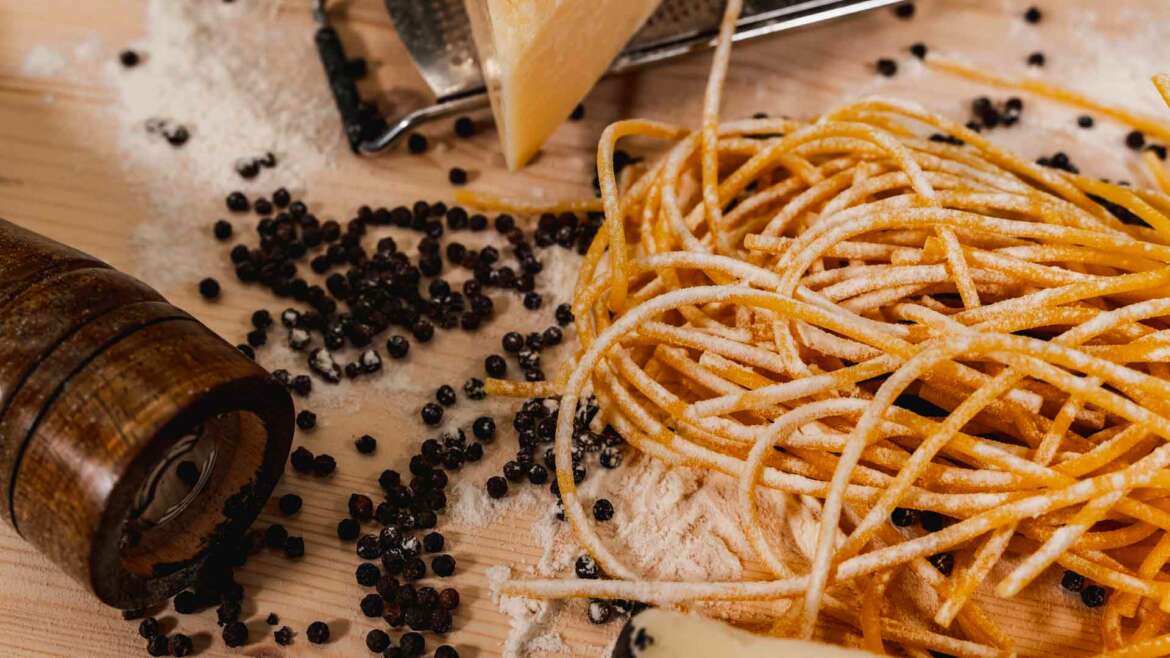We hear so much about Italian cuisine, but what are the authentic Italian pasta recipes that best represent the different regions?
From the cold regions of northern Italy to the sunny beaches of the islands, each area has its own gastronomic traditions that we often find enclosed in a great pasta dish!
In this article, we will begin a journey to discover 5 authentic Italian pasta recipes, find out how they originated and some interesting facts that made them unique.
5 authentic Italian pasta recipes: history and curiosity
Whether you’re an aspiring chef or simply a pasta lover, these recipes will transport your taste buds to different corners of Italy, allowing you to savor the distinct flavors and aromas that make Italian pasta a culinary masterpiece.
And now, here are the 5 authentic Italian pasta recipes I love the most!
Pasta with meatballs
Spaghetti with meatballs is the dish that has been the symbol of Italian emigration to the United States for years. Italians seeking their fortunes in America were poor and could afford at most a plate of spaghetti with canned tomatoes, two of the cheapest foods of the time. As soon as they could put some money aside, Italians began to look for some cheaper cuts of meat and often found ground beef. To make it last longer and make it more nutritious, the meat was kneaded together with other cheaper ingredients such as bread, grated cheese, and herbs to give it flavor. Meatballs were added to tomato sauce to give the dish more flavor.
The tradition was probably brought to the United States from Abruzzo, where spaghetti with “pallottoline” was a popular specialty.
Amatriciana sauce
There are no official recipes for Amatriciana sauce in any cookbook or recipe book, but it is very likely that this dish was widespread in Lazio as early as the 19th century. A child of “Gricia” but with the addition of tomatoes, it owes its name to the Lazio town of Amatrice, where it originated.
The first written record of this recipe dates back to 1816, when Roman cook Francesco Leonardi served the dish at the papal court. Although it was a poor dish, the pasta served in the Matrician manner was so popular that it soon became famous, and Leonardi also served it again at the banquet at the Quirinal Palace in honor of the Austrian Emperor Francis I.
Pesto sauce for pasta
The Pesto sauce originated in beautiful Liguria and, in its original version, contains only seven ingredients. Basil, garlic, extra virgin olive oil, Grana Padano cheese, Sardinian pecorino cheese, pine nuts and coarse salt. Nothing more is needed to prepare one of the tastiest and most beloved sauces in Italian cuisine.
Its history is intertwined with a legend. It seems that St. Basil, a monk who lived in a convent on the heights of Prà, picked an aromatic herb that grew in that area, later named basil in his honor. He combined it with a few simple ingredients given to him by the faithful, pounded (hence the name pesto) everything in a mortar, and created the very first pesto sauce in history!
Spaghetti alle vongole
Spaghetti alle Vongole is a seemingly simple dish but not at all easy to make to perfection. The ingredients are few but must be of excellent quality, and the technique requires great skill to create a perfect sauce.
Although today they are popular throughout Italy and are a symbol of the Italian summer, Spaghetti alle Vongole originated in Naples. They were first served in 1762 at the court of Ferdinand IV of Bourbon, monarch of the Kingdom of Naples, on Christmas Eve. Since then they have been the traditional dish for the evening of December 24.
Cacio e pepe pasta
Cacio e Pepe pasta is another symbol of Roman cuisine. One of the most beloved authentic Italian pasta recipes of all time, it has a history dating back several centuries.
Shepherds in the Roman countryside would fill their saddlebags with pecorino cheese, black peppercorns, and dried spaghetti, prepared by hand with water and flour, during the long journeys of the flock. The reason for choosing these three ingredients is simple: pecorino kept for a long time, pasta provided nourishment, and pepper warmed during cold nights. Thus was born Cacio e Pepe pasta, now widespread throughout Italy.
5 authentic Italian pasta recipes: how to prepare?
Although seemingly simple, these traditional Italian pasta recipes are by no means easy to make if you do not know the right technique.
If you want to try making them at home, find all these and 5 other authentic Italian pasta recipes in our cooking book. I explain step by step how to make the recipes, with photos and detailed ingredients.

